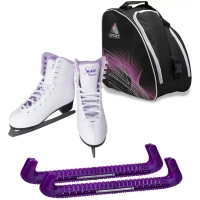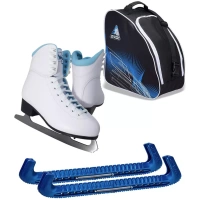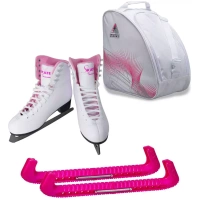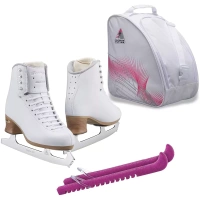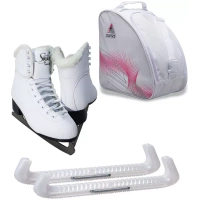Lacing your hockey skates to make them fit properly is vital.
If the skates are too loose, you are not going to get all the performance out of them, and you might get bad blisters. And if they are too tight, you are going to feel a lot of discomfort in your feet and won’t be able to spend long hours practicing on ice rinks.
Before you put the skates on, there are a couple of things you want to check out first.
Make sure that your boots are the right size – not too big or too small. Put your foot in the skate when the laces are loose and untied. Then stand next to a wall and kick the wall lightly until your toes touch the front of the skate. Look if there is a gap between your heel and the heel of the boot. If the gap is too small or there is no gap, you will need a bigger size. Now, if there is a small gap, see if you can put your index and middle fingers behind the heel. If you manage to do that, then it’s a good fit. If there is too much space between your fingers and the heel, you should go for a smaller size.
Make sure that the laces are loosened all the way down, especially the first time. This way, you can slide in nicely and smoothly without putting too much wear and tear on the internal padding. Then pull the tongue out, so you have a lot of space inside. Sitting down, put your foot straight in, lean down, and push your heel into the skate. You could kick on the heel a little to make sure you are all the way into the back of the boot. Then, if it is your first time with new skates, start lacing from all the way down, because they are usually quite loose down there.
There are several techniques of lacing ice hockey skates, but there is no best one. If you are a beginner, try each one until you find what works best for you.
You can choose any method that will work for you but remember not to be lazy when it comes to safety and prevention. If you step onto the ice and realize that your feet stagger, go back and re-tie them tighter. If you get the feeling that your feet are getting numb, you should loosen the ties around your ankles.
When you are done skating, do not just take the ice skates off and leave them like that. Take your time to loosen them all the way down and slip your feet out easily. Untie the first couple of eyelets and loosen the rest, and your foot will pop right out. Don’t step on the heel to pull out your foot. Otherwise, you will wear the skates out fast and will need a new pair.
